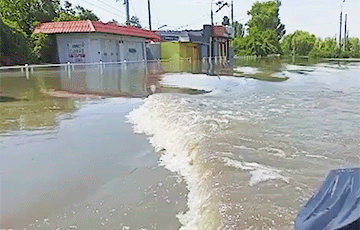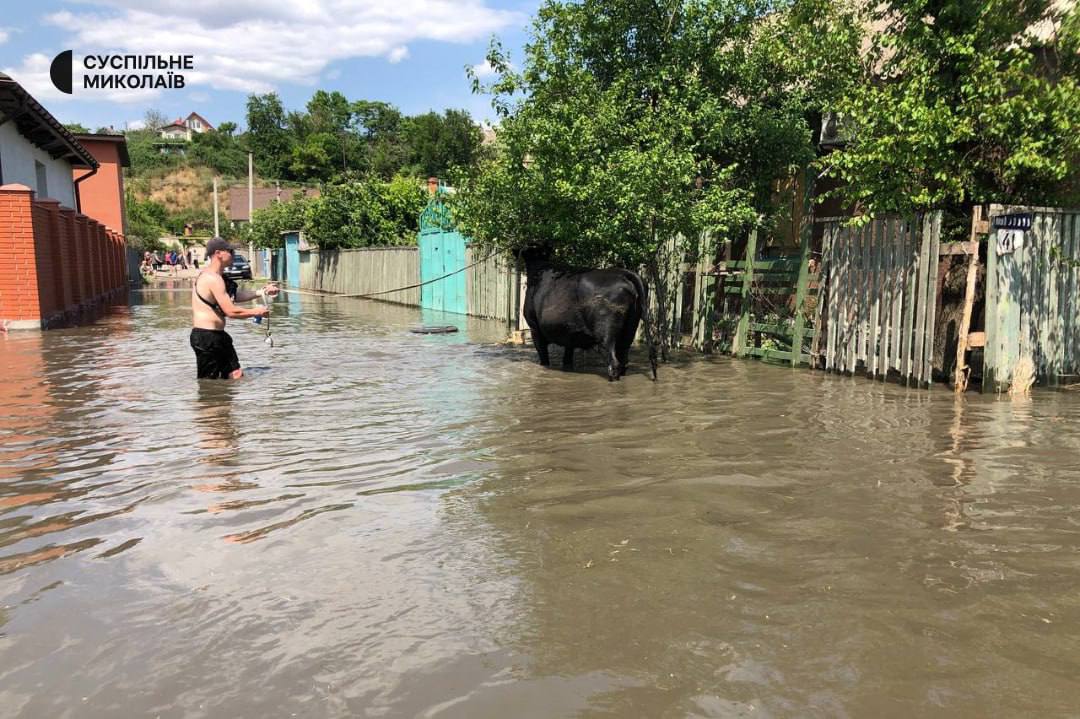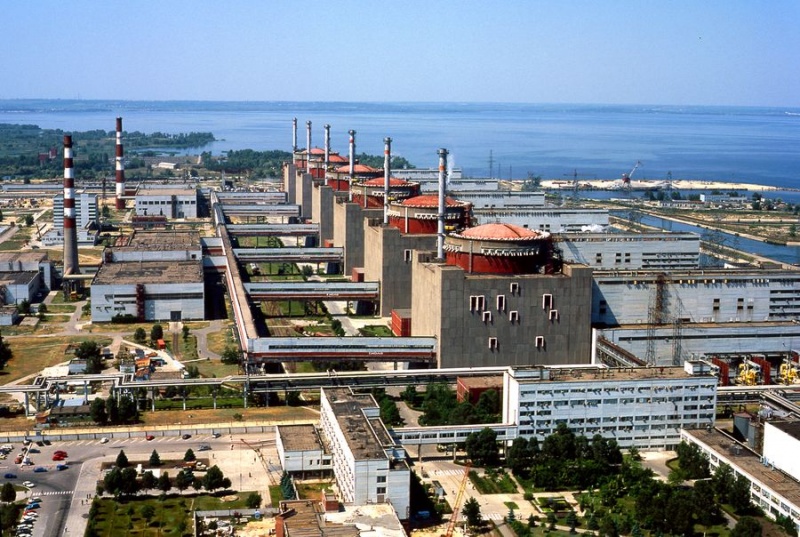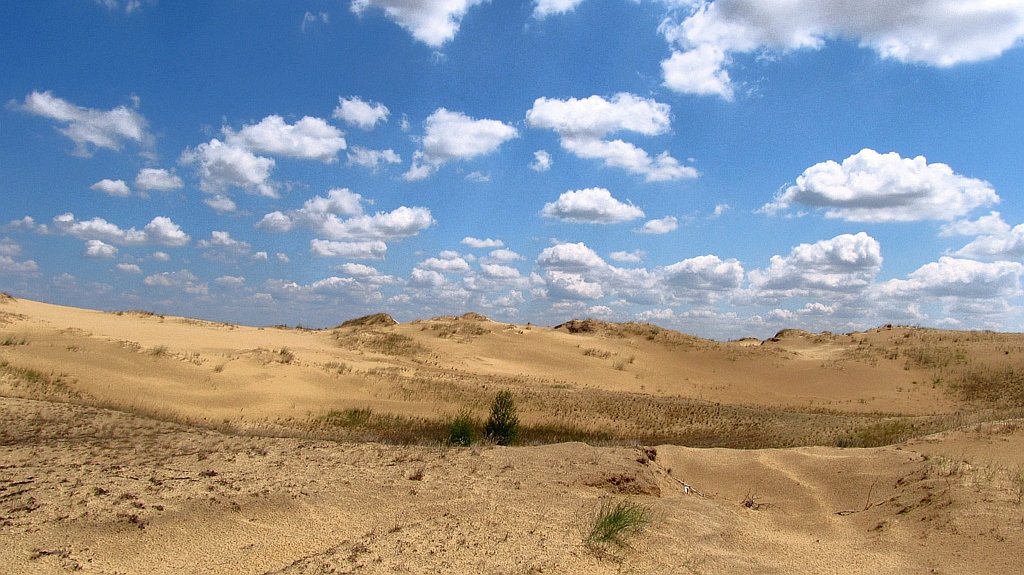Russia's Undermining Of Kakhovka HPP: Key Repercussions
16- 7.06.2023, 7:49
- 27,064

The new Chernobyl will be much worse.
On the night of 6 June, Russian occupants blew up the Kakhovka hydro-electric power station. Under the Geneva Convention, the destruction of a hydroelectric power plant is considered a weapon of mass destruction and a war crime. The Office of the Prosecutor General has already initiated an investigation into the occupants' undermining of the dam under the Article of Ecocide. Apostrof learns the consequences of yet another barbaric crime of the aggressor country.
Water will not be still
The explosion destroyed 11 out of 28 spillway gates of the Kakhovka HPP dam, the width of the breach is 177 metres. In total, the width of the dam section with the gates is 447 metres. The Kharkiv Ukrhydroproject, which designed this hydro-technical structure, has already stated that the HPP is beyond repair. About 80 settlements are under the threat of flooding, both on the left and on the right banks of the Dnipro. Korabel Island and Hidropark in Kherson will also be flooded.

"The maximum water rise is in settlements that are in the immediate vicinity of the Kakhovka HPP. Further the water will spread along the banks, and in the area of Kherson, in places where coastal residential buildings and industrial facilities are located; water rise is expected at 1.5-2 meters," hydrogeologist and head of the company "Center GIS Analyst" Olexiy Ishchuk tells Apostrof.
Ukrhydroenergo forecasts that the Kakhovka reservoir will be drained within the next four days and water will remain only in the natural channel of the Dnipro River.
It should be noted that within 60 kilometres from the Kakhovka HPP to Kherson, the Dnipro flows within its natural banks (the river is regulated by a cascade of reservoirs from the border with Belarus to Nova Kakhovka), and the depth of the river averages 6 metres. In other words, this is the approximate water level that should remain in the drained Kakhovka reservoir.
"The water will reach its maximum in the flooded settlements and everything will go back to normal. And it will happen fast, given the hot weather. So, the flooding of houses is not the greatest problem among the numerous ones that await Ukraine because of the destruction of the Kakhovka hydroelectric power station", director of the public organization Ecodia Natallia Gozak says to Apostrof.
Nuclear danger
The main problem is the possible cessation of water supply for cooling the reactors of the Zaporizhzhia nuclear power plant, the largest in Europe. The Kakhovka reservoir dam is 16.6 metres high and, accordingly, the cooling ponds were designed for approximately this water level. Now the water level will inevitably fall by at least 10 metres.

"Such risks were studied back in February, when the invaders occupied the North Crimean Canal, and the water level in the Kakhovka reservoir dropped to 13.7 metres. But then, as a result of a prolonged spring flood, the level recovered to normal. Now the pools and ponds at ZNPP are full, there are reserve sources, mobile pumping stations that can pump water several kilometres away. So there is enough water to cool the reactors for now. Moreover, they were shut down on September 11, 2022, and the water needed to cool the shut-down reactors is much less," nuclear safety expert Olga Kosharnaya tells Apostrof.
But in this case the main word is "yet". And this causes obvious fears. Considering, moreover, that the Zaporizhzhia NPP is now in the hands of Russian terrorists.
"Where do ZNPP reserve reservoirs replenish their water supply from? From the Kakhovka reservoir. This reserve will be enough for a while, but what will be next? Anyway, we have to prepare for the worst-case scenario - a possible accident involving dehydration of the reactor core, depressurisation and release of radionuclides into the environment. The accident at Fukushima happened due to the failure of the emergency cooling system. I repeat, we must prepare for the worst. I do not know how, given that the plant is controlled by the Orcs", Serhiy Barbashev, professor of the NPP department of the Odessa National Polytechnic University, told Apostrof.
It is worth noting that Russia has been planning this attack for days. Shortly before the bombing, the occupants raised the water level in the Kakhovka reservoir to a record high of 17.5 metres.
Water starvation
Another major problem: the Kakhovka Reservoir was the main source of drinking water for Zaporizhzhia, Kherson, parts of Mykolaiv and Dnipropetrovsk Oblasts, as well as water for agriculture. And now there will be a huge shortage of drinking water.
"Water intakes become visible; huge territories and many settlements remain without water. These are major cities such as Kherson, Mykolaiv, Nova Kakhovka, Kakhovka, Kryvyi Rig, Nikopol and Marganets. Not to mention small towns and villages. Wells and boreholes will be dewatered. It is a catastrophe. We have to look for the alternative sources urgently and to solve the water supply problem", Director of the Institute of Water Problems of the National Academy of Sciences of Ukraine Mykhailo Romaschenko says to Apostrof.

He says that the annual water intake from the Kakhovka reservoir for the needs of the region used to be up to 8 billion cubic metres. By comparison, a maximum of 2 billion cubic metres was delivered to Crimea through the canal. Incidentally, the occupied peninsula was left without water for a long time because of the occupants' undermining of the dam.
"Water supplies to the field irrigation systems will stop. And it will be mainly in the occupied lands. Many towns and villages that consume water from the Kakhovka canal, including Berdyansk and Mariupol, will be without drinking water", Mikhail Romaschenko says.
An environmental disaster awaits the region in the near future.
"The water will leave, exposing the bottom of the reservoir. Algae, fish, various biomass will rot there. Then, after some time, the dried up banks will start turning into a desert. It will bear climate consequences - less precipitation, dust storms, rise of temperature in the region", Natallia Gozak, ecologist, says.
However, the water problems and the environmental disaster may become irrelevant if the main problem - the Zaporizhzhia NPP - is not solved. Then not only Ukraine but also the entire Europe risks a new Chernobyl. But a much more dangerous one.









